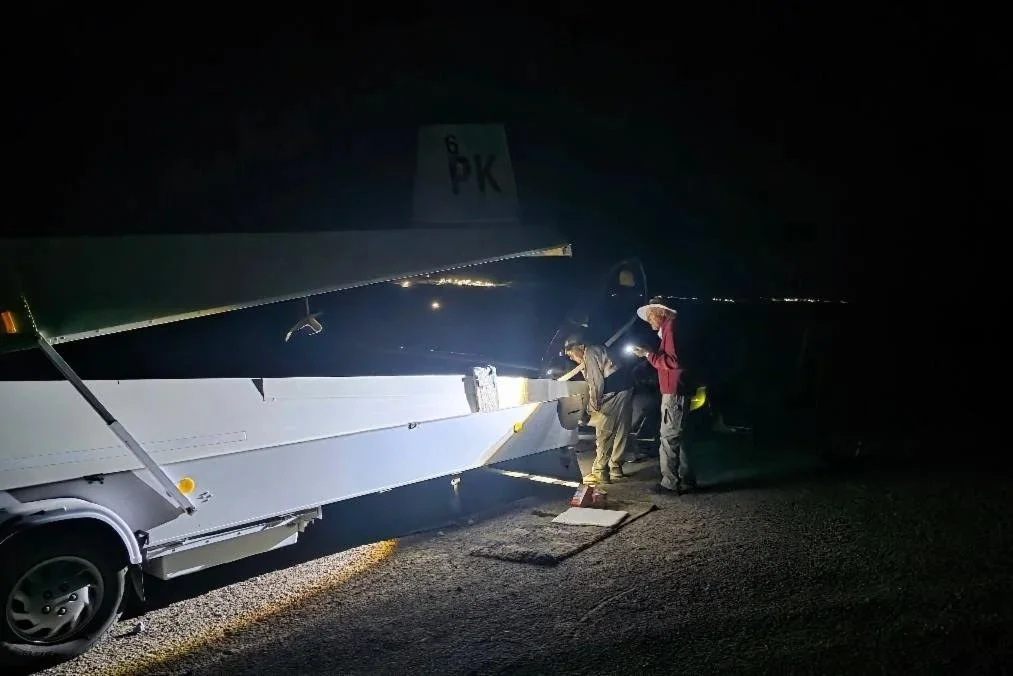Soaring Academy Blog
Soaring is Learning
Soaring is about learning all the time. Here are some tips on becoming a better soaring pilot. Brought to you by Southern California Soaring Academy.
A mid-morning launch from Crystal turned into a seven-hour odyssey through lift, sink, and endless sky. What began as a simple tow ended as a desert landing under the stars—a reminder that every flight writes its own story.
Mike Koerner and Sean Eckstein share two recent soaring flights from Crystal. Mike explores the highs and lows of cockpit tech, while Sean chases lift through cloud streets and virga on a flight to Gabbs. Both highlight sharp decision-making and the beauty and unpredictability of mountain soaring.
During my rookie soaring season, I witnessed a dust devil destroy a barn and a red-tail hawk lock eyes with me mid-flight—two extraordinary moments I assumed I'd see again. Years and countless flight hours later, neither has repeated. How much longer, I wonder, will I wait?
Slacking the towline ensures a smooth release and prevents damage, making it an essential skill for glider pilots. Always confirm separation visually and handle releases with care to protect altitude and safety.
A head-on encounter with a Cessna on final approach taught me the value of calm guidance and quick action. My instructor’s steady “Slide to the right” turned near-disaster into a safe landing, driving home one essential truth: when chaos strikes, fly the aircraft.






